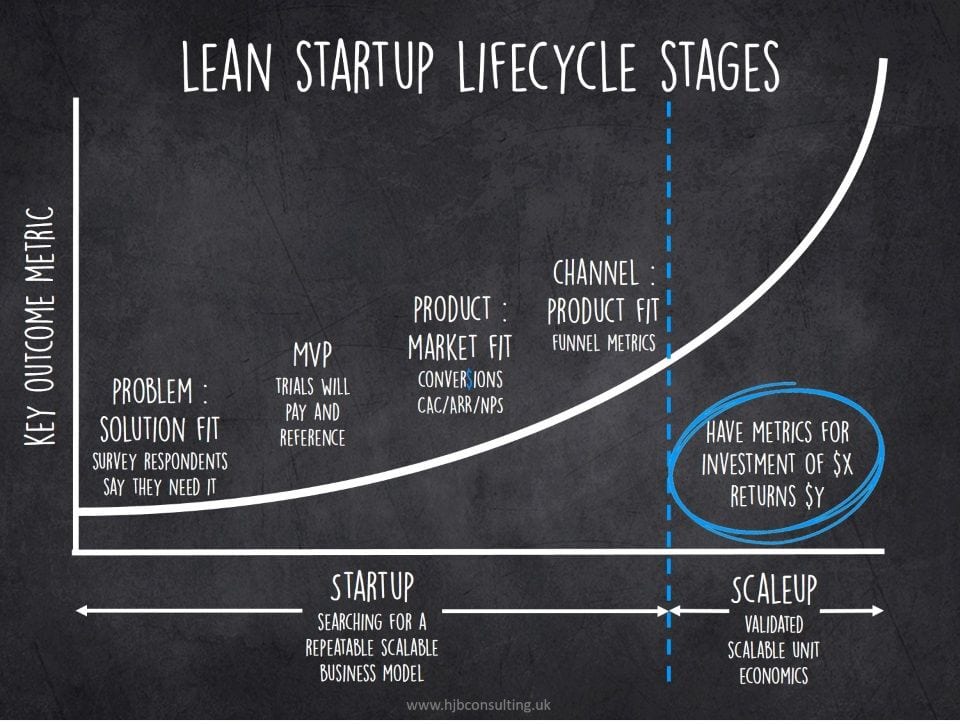If you’re a young entrepreneur thinking about starting your own business, get ready to experience various ups and downs. You may call them “difficulties” and “victories,” but the professionals and experienced businessmen know they are just typical stages of a startup.

How can a startup have any stages of the lifecycle if each business is unique?
This is what startup lifecycle stages are all about.
And such predictability means good news for you. Don’t disregard a startup idea as scary, complex, or unpredictable. Just take it and follow the checklist of prescribed phases. Moreover, remain patient, love what you do no matter what, and believe in yourself.
These are all the ingredients in a secret recipe that help any startup win.

What are the 5 stages of startups that prescribe the future of any business idea?
Each startup is a marathon with 5 pit stops that bring it to the next level:
- Idea polishing,
- MVP development,
- Fitting product to the market,
- Scaling, and
- Globalizing.
Let’s check what’s going on on each stage.

1. Mental preparation for a startup
Everything starts with an idea — especially a startup. So, take the time to imagine your business in detail. What will you do? Whom will you serve? Why will these people need your product or service in their lives?
In essence, each startup is a solution to a specific problem. If your business doesn’t fix anything, it likely had a bad beginning. Thus, revise if you understand your purpose and context to be effective beforehand. Ideally, start your business by finding answers to these questions. Don’t throw your resources and time without need.
The next step after general theorizing is to determine your target audience. To survive, you should understand your buyers. So, as a startup founder, be passionate about getting acquainted with your clients closer and closer day after day. Use all the sources you can find: scientific research, posts on forums, official statistics, commentators in your competitors’ profiles in social media, in-depth interviews with your first clients, etc. Don’t stop until you define the customer profile to details.
The ultimate goal of each such inquiry is to dissect the customer pain — the individual problem that is sharp enough to possess an absolute value. Once you gain this precious knowledge, you have a solid ground to fly to the next stage.
The biggest mistake made on this stage: To start a business believing some abstract “people” will like your idea.
How to overcome: Learn your customers. Become their ardent proponent. Don’t stop until their image and their pains are clear to you. Learn what they eat for breakfast if it helps your business.

2. Developing the basic functionality for your service (MVP)
When you’ve collected enough evidence to put your ideas into practice, don’t get too excited and run into extremes. The second step is not about renting a penthouse for your office or hiring a massage therapist for your team. Before celebrating that you’ve found all customer pains, make a reality check of your hypothesis with an MVP. This solution is the best to track customer behavior in practice and reduce your risks to the minimum.
MVP not only validates the fundamental purpose of your business but also clarifies its critical technical details. Here are the top 5 tools you can use to test your hypothesis:
- User interviews (when you ask which problems your first clients had with your product),
- Landing pages with an explainer video (where you present your product’s features),
- A/B testing (your best friend to understand which option among two variants users like more — especially if they can’t determine what they like by themselves),
- Promotion campaign (use the complex statistical data from Google Analytics and Facebook to empower your insights),
- Fundraising initiative (ask your users to vote for your service with their money).
To benefit from this move, use all the possible tools and gain a sufficient number of initial users. Invest in building a landing page and launching a crowdfunding campaign — these tools are the best to check the real demand.
The biggest mistake made on this stage: Develop your product without showing it to people.
How to overcome: Involve your customers on each stage of your product development. Value each piece of feedback received and use it as the direction for your work tomorrow. Activate all the metrics possible to know the reaction of your customers in detail.

3. Polishing the details
Once you’ve collected the fanbase of people who share your idea and are ready to pay for your solution, it’s time to optimize your product for the market demands. Don’t rush: the progress should be smooth and even slow. But don’t lose control over the situation by checking the retention rate metrics constantly.
Test everything: messages in social media, CTAs on your landing page, stages in the funnel. Pay special attention to distribution channels: you’ll inevitably have only a couple of effective platforms worth further optimization. Don’t be afraid to stop working in some directions.
The overarching goal is to notch off the unnecessary elements and polish up the effective parts. That’s where your business becomes a unique solution with all the necessary features to solve its market in the best way. Simply put, that’s how you uncommonly solve a common problem.
The biggest mistake made on this stage: Investing equal resources in every direction.
How to overcome: Concentrate on the best practices and the most effective channels. Work hard until every technical detail is polished, and your user base starts growing constantly.
4. Scale your business
As soon as you’ve become best friends with your target audience and have created the perfect offering, the time for scaling your business has come! To make a wise decision, critically evaluate the key strengths of your business — and hire top specialists to empower and expand them. Make sure these new people have everything to reveal their best: resources, budget, and operational autonomy.
Scaling your team is the best investment in the future. With the right people around, any task can be done — be it the new features in an existing product, the new offering, or a completely new project.
The biggest mistake made on this stage: Relaxing and thinking that the most challenging times are behind.
How to overcome: Don’t scrimp on specialists. Even if your team has already proved its loyalty in the previous stages, you have to find the best new people to delegate the management tasks and make your startup work in the long run.
5. Become an international company
After the successful completion of all the previous stages, you’re about to become an international company. Be brave here, the sky's the limit!
If you’ve reached the stars in your country, look for opportunities to expand abroad. Every new country guarantees new challenges, so you’ll never get bored! With around 200 countries in the world, you have 200 opportunities to build a startup on the same idea from scratch.
The biggest mistake made on this stage: Limiting yourself to your national market.
How to overcome: Never stop learning and challenging yourself. Launch each new country as a startup: research the target audience, develop an MVP, work hard to launch, and pick the best local team. Impossible is nothing — especially for startupers. Good luck!
Frequently asked questions about a lifecycle of startup
Are there any other classifications for startup phases?
Some experts avoid a 5-stage approach to a startup lifecycle. For some enterprises, only 3 stages out of 5 are relevant: idea, launch, and growth.
What is startup lifecycle strategy?
Basically, it’s the preparation for your business growth made on the first stage of the startup lifecycle. Some observers recommend picking the real expert to help you build the strategy — not only in terms of industry rules but also as an appropriate business model for your company.
For a novel businessman, strategizing the startup lifecycle can be really overwhelming. You risk getting stuck at Stage 1 and never move beyond plain theorizing. That’s why we recommend not overthinking about the preparation for the next stages. Concentrate on your target audience and call experts to learn their pains better only. Of course, you should get ready for different stages — but if you do everything smoothly and according to client needs, the growth process will happen naturally.
What is growth stage startup?
Growth is the stage where a startup can already scale and become internationalized. Basically, it’s another title for everything that happens with a startup after its launch.
What is startup funding?
Funding has a tremendous impact on all the stages of a startup if you launch your business from investment. It’s a good idea to attract venture capitalists or launch a crowdfunding campaign. Nevertheless, the increased number of funders means a higher level of responsibility.
Of course, a money problem is sharp for any startup. However, with the right approach and constant contact with your users, you can protect yourself from wasteful spending. For example, instead of hiring consultants to research your market, ask those ten people who already are your clients. In practice, a good in-depth interview with your users has already saved businesses lots of money and accelerated their growth.
We, at Intellectsoft, empower companies and their workforce with cutting-edge transformative solutions and data-driven insights. Are you and your organization ready to shift the mindsets and get the most out of innovations?
Talk to our experts and find out more about the topic and how your business or project can start benefiting from it today!